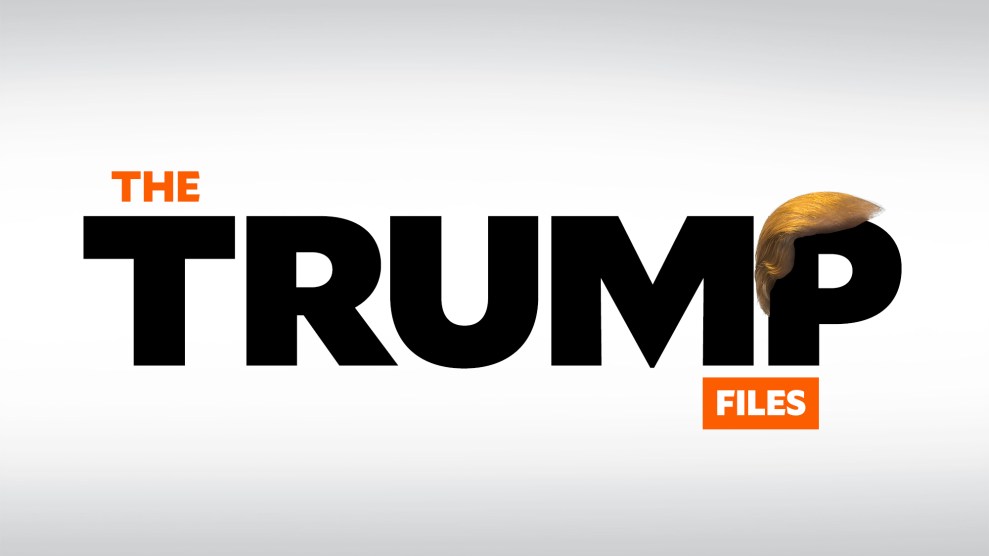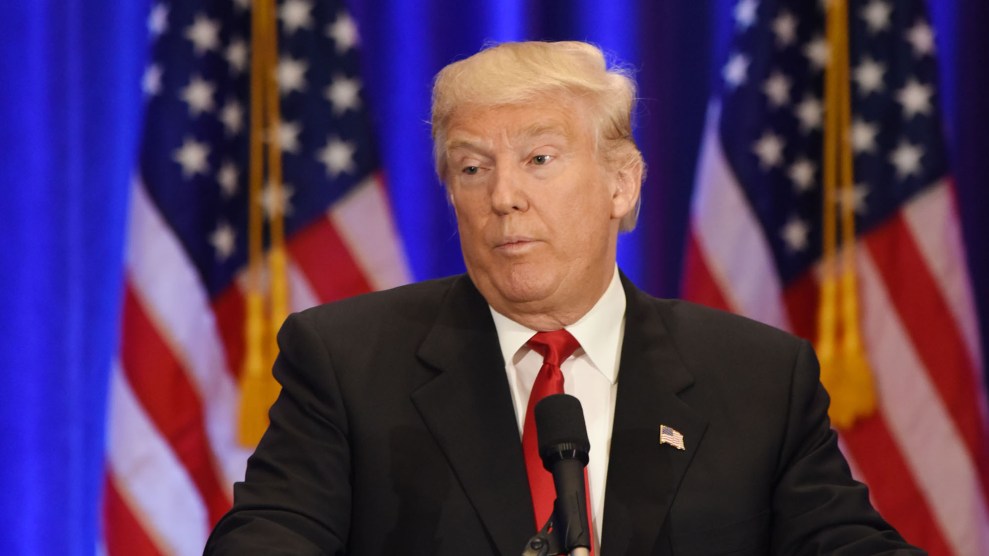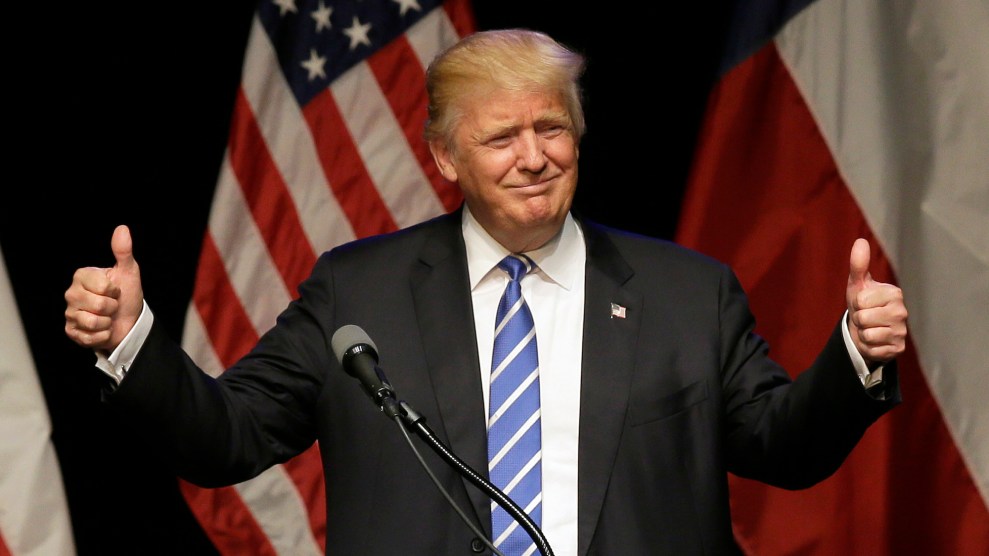
Ivylise Simones
Until the election, we’re bringing you “The Trump Files,” a daily dose of telling episodes, strange but true stories, or curious scenes from the life of presumptive GOP nominee Donald Trump.
When then-Soviet Union leader Mikhail Gorbachev visited New York City in 1988, Donald Trump saw an opportunity for an up-close-and-personal encounter with the top Russian. Unfortunately, he got the wrong Gorbachev.
After descending from his office in Trump Tower upon hearing that Gorbachev was outside, Trump shook hands with a man who appeared to be Gorbachev—but wasn’t. Impersonator Ronald Knapp, who had won a Gorbachev look-alike contest, had the pleasure of meeting Trump, who notoriously loathes handshakes.
Trump denied that he fell for the stunt. “He looked fabulous and he sounded fabulous, but I knew it couldn’t be right,” Trump said, according to the Milwaukee Journal. “For one thing, I looked into the back of his limo and saw four very attractive women…I knew that his society had not come that far yet in terms of capitalist decadence.”
But a man accompanying Knapp, Gordon Elliott, assured the New York Times that Trump had been played. “There was absolutely no question that he bought it,” Elliott said. Knapp subsequently wrote a book about his time as a Gorbachev impersonator. The title? The Guy Who Got Trump.
Read the rest of “The Trump Files”:
- Trump Files #1: The Time Andrew Dice Clay Thanked Donald for the Hookers
- Trump Files #2: When Donald Tried to Stop Charlie Sheen’s Marriage to Brooke Mueller
- Trump Files #3: The Brief Life of the “Trump Chateau for the Indigent”
- Trump Files #4: Donald Thinks Asbestos Fears Are a Mob Conspiracy
- Trump Files #5: Donald’s Nuclear Negotiating Fantasy
- Trump Files #6: Donald Wants a Powerball for Spies
- Trump Files #7: Donald Gets An Allowance
- Trump Files #8: The Time He Went Bananas on a Water Cooler
- Trump Files #9: The Great Geico Boycott
- Trump Files #10: Donald Trump, Tax-Hike Crusader
- Trump Files #11: Watch Donald Trump Say He Would Have Done Better as a Black Man
- Trump Files #12: Donald Can’t Multiply 16 and 7
- Trump Files #13: Watch Donald Sing the “Green Acres” Theme Song in Overalls
- Trump Files #14: The Time Donald Trump Pulled Over His Limo to Stop a Beating
- Trump Files #15: When Donald Wanted to Help the Clintons Buy Their House
- Trump Files #16: He Once Forced a Small Business to Pay Him Royalties for Using the Word “Trump”
- Trump Files #17: He Dumped Wine on an “Unattractive Reporter”
- Trump Files #18: Behold the Hideous Statue He Wanted to Erect In Manhattan
- Trump Files #19: When Donald Was “Principal for a Day” and Confronted by a Fifth-Grader
- Trump Files #20: In 2012, Trump Begged GOP Presidential Candidates to Be Civil













